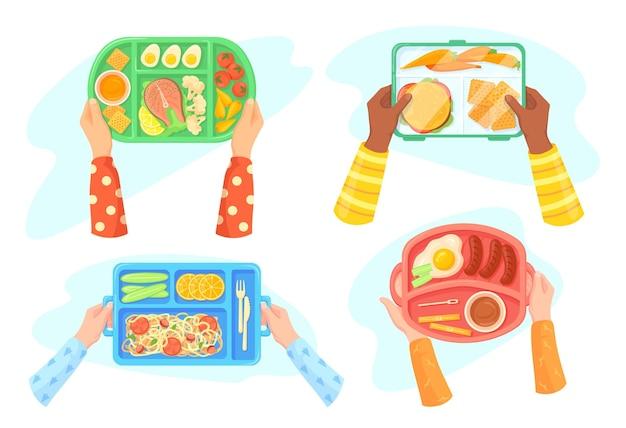Feeding programs play a vital role in ensuring the well-being and development of individuals, particularly in communities facing food insecurity. These programs are designed to address different aspects of nutrition, ranging from severe acute malnutrition to general malnutrition within vulnerable populations. By understanding the meaning and importance of feeding programs, we can grasp the significance of their impact on community health.
In this blog post, we will explore various aspects of feeding programs, including therapeutic feeding, the meaning of CMAM (Community-based Management of Acute Malnutrition), GAM rate (Global Acute Malnutrition rate), and the principles of CMAM. We will also delve into the diagnosis of severe acute malnutrition and identifying infants with SAM (Severe Acute Malnutrition) to ensure effective intervention and support.
Additionally, we’ll discuss how to prepare for outreach programs and the significance of nutrition in OTP (Outpatient Therapeutic Program). Don’t worry if these terms seem overwhelming – we will break them down and provide a comprehensive understanding of their meaning and impact. So let’s embark on this journey to discover how feeding programs create a brighter and healthier future for those in need.
What is the Meaning of a Feeding Program
Feeding programs, have you heard of them? No, they’re not exclusive dining experiences for VIP cows or a culinary event for ravenous toddlers. Though that would be quite the spectacle! Feeding programs, in a nutshell, are initiatives designed to tackle hunger and malnutrition in communities. They provide regular meals to those in need, making sure no belly is left rumbling.
The Hunger Fighters
Imagine a group of everyday superheroes armed not with capes, but with aprons and ladles. These are the dedicated individuals who prepare and distribute meals through feeding programs. Their mission? To combat hunger, one serving at a time. They understand the importance of sustenance and its impact on overall well-being.
A Fork in the Road
Feeding programs often target vulnerable populations such as children, elderly individuals, and low-income families. They aim to bridge the gap between limited resources and nutritional needs. These programs recognize that access to nutritious food is crucial for growth, development, and a healthier tomorrow.
Filling Empty Plates
Imagine a world where no one goes to bed hungry. Feeding programs strive to make that a reality. They provide regular meals to individuals who are unable to afford or access sufficient food. By offering sustenance, these programs not only provide nourishment but also alleviate the financial burden of purchasing food for those struggling to make ends meet.
Nutritious Delights
Feeding programs go beyond simply putting food on the table. They embrace the importance of balanced nutrition to combat malnutrition. These programs aim to provide meals that are not only filling but also packed with essential nutrients. From fruits and vegetables to proteins and grains, the menu is carefully crafted to ensure optimal health benefits for recipients.
Spreading Hope, One Meal at a Time
Feeding programs are more than just a means to satisfy hunger. They offer hope, support, and a sense of community. These initiatives bring people together, fostering bonds and uplifting spirits. By sharing meals, feeding programs demonstrate compassion and solidarity, showing that no one is alone in their struggle against hunger.
The Path Forward
As we navigate the complexities of a fast-paced and interconnected world, it’s essential to remember the significance of feeding programs. They play a vital role in addressing hunger and promoting a healthier society. By supporting and championing these initiatives, we contribute to a brighter future where empty stomachs and malnutrition are no longer a hurdle.
So, the next time you come across the term “feeding program,” remember the tireless superheroes cooking up nutritious meals and the impact they have on the lives they touch. Together, let’s join hands and work towards a world where no one goes to bed hungry.
FAQ: What is the Meaning of a Feeding Program
What is the meaning of feeding program
A feeding program is a coordinated effort to provide nourishment to individuals, especially those who are malnourished or in need of nutritional support. These programs aim to improve the health and well-being of people by ensuring they receive the necessary nutrients for proper growth and development.
What is therapeutic feeding
Therapeutic feeding is a specialized approach within a feeding program that focuses on providing targeted nutrition to individuals with severe malnutrition or medical conditions that affect their ability to properly absorb and utilize nutrients. It involves carefully formulated diets and specialized feeding techniques to address specific nutritional deficiencies and help restore health.
What is the full meaning of CMAM
CMAM stands for Community-Based Management of Acute Malnutrition. It is an approach that aims to prevent and treat malnutrition within local communities. CMAM programs involve the active participation of community members and healthcare providers to identify, diagnose, and manage acute malnutrition cases and promote healthy eating practices.
What is GAM rate
GAM rate refers to the Global Acute Malnutrition rate, which is a measurement used to assess the prevalence of acute malnutrition in a given population. It is calculated by dividing the number of children suffering from acute malnutrition by the total number of children in that population, usually expressed as a percentage.
What are the principles of CMAM
The principles of CMAM include:
-
Community involvement: CMAM programs actively engage the community to ensure the participation and ownership of local individuals, families, and community leaders in the identification, treatment, and prevention of malnutrition.
-
Timely detection and treatment: Early identification and prompt treatment of malnutrition cases are essential to prevent further deterioration and improve outcomes. CMAM programs emphasize the importance of early intervention.
-
Integrated approach: CMAM integrates various aspects of healthcare, including nutrition, health education, and medical treatments, to address the underlying causes and consequences of malnutrition comprehensively.
-
Outpatient-based care: CMAM programs prioritize outpatient treatment whenever possible, allowing children and individuals to receive necessary support while remaining in their communities and maintaining family and social connections.
How do you prepare for an outreach program
Preparing for an outreach program involves several steps:
-
Assess the target population: Understand the specific needs and demographics of the population you will be serving. Take into account factors such as age, gender, cultural considerations, and prevalent health conditions.
-
Plan logistics: Determine the location, date, and duration of the outreach program. Arrange for appropriate facilities, transport, and equipment needed for the program.
-
Mobilize resources: Secure the necessary resources, including funding, food supplies, medical equipment, and personnel, to ensure the smooth implementation of the program.
-
Train volunteers and staff: Provide comprehensive training to volunteers and staff members involved in the outreach program. Equip them with the knowledge and skills needed to effectively handle various aspects of the program, such as nutrition, healthcare, and community engagement.
-
Spread awareness: Promote the outreach program through various channels, including social media, local community groups, and word of mouth. Raise awareness about the program’s goals, benefits, and how individuals can participate or benefit from it.
What is nutrition OTP
Nutrition OTP refers to Nutrition Outpatient Therapeutic Program. It is a component of feeding programs that specifically targets individuals who do not require admission to a health facility but still require intensive nutritional support. The program provides outpatient care, including regular assessment, monitoring, and provision of necessary therapeutic foods and supplements to promote healthy growth and recovery from malnutrition.
How is severe acute malnutrition (SAM) and moderate acute malnutrition (MAM) calculated
Severe acute malnutrition (SAM) and moderate acute malnutrition (MAM) are calculated using specific measurement indicators:
-
SAM calculation: SAM is typically determined based on the weight-for-height measurement. If a child’s weight is significantly below the average weight for their height, they are considered to have severe acute malnutrition.
-
MAM calculation: MAM is determined using the mid-upper arm circumference (MUAC) measurement. If a child’s MUAC falls below a certain threshold, it indicates moderate acute malnutrition.
These measurements help identify the severity of malnutrition and guide the appropriate treatment and care.
How is severe acute malnutrition diagnosed
The diagnosis of severe acute malnutrition involves a combination of measurements and clinical assessment by healthcare professionals. Key diagnostic criteria include:
-
Anthropometric measurements: Weight-for-height or MUAC measurements are taken and compared against established standards to determine the severity of malnutrition.
-
Clinical signs: Healthcare professionals evaluate physical signs such as edema (swelling due to fluid retention), visible muscle wasting, and other visible indicators of malnutrition.
-
Medical history: Gathering information about the individual’s medical history, including any underlying conditions or recent illness, can provide valuable insights into the causes and severity of malnutrition.
By considering these factors, healthcare professionals can accurately diagnose severe acute malnutrition and initiate appropriate treatment.
How will you identify a severely malnourished baby (SAM baby)
Identifying severely malnourished babies involves several key signs and indicators:
-
Weight loss or inadequate weight gain: Severely malnourished babies typically have a significantly lower body weight compared to their age group, or they may experience inadequate weight gain despite adequate feeding and care.
-
Visible signs of malnutrition: Look for visible signs of malnutrition, such as a distended abdomen, visible bones, sunken eyes, loose skin folds, or thinning hair.
-
Lack of appetite or feeding difficulties: Severely malnourished babies might exhibit reduced appetite, feeding difficulties, or disinterest in food.
-
General malaise or weakness: Babies with severe malnutrition may appear weak, lethargic, and have low energy levels.
If a baby displays these signs, it is crucial to seek immediate medical attention and specialized nutritional support to prevent further complications and promote healthy growth.
Now that you have a comprehensive understanding of feeding programs and related concepts, you’re better equipped to advocate for proper nutrition and contribute to the well-being of individuals in need. Remember, healthy individuals make for a healthy society!

